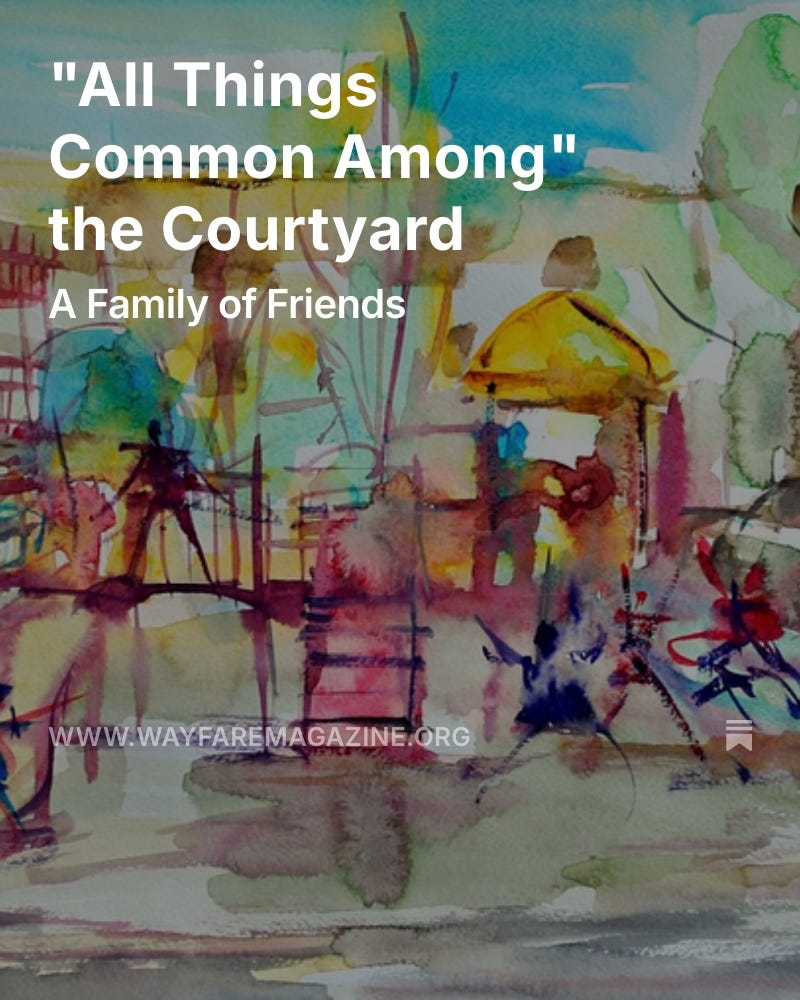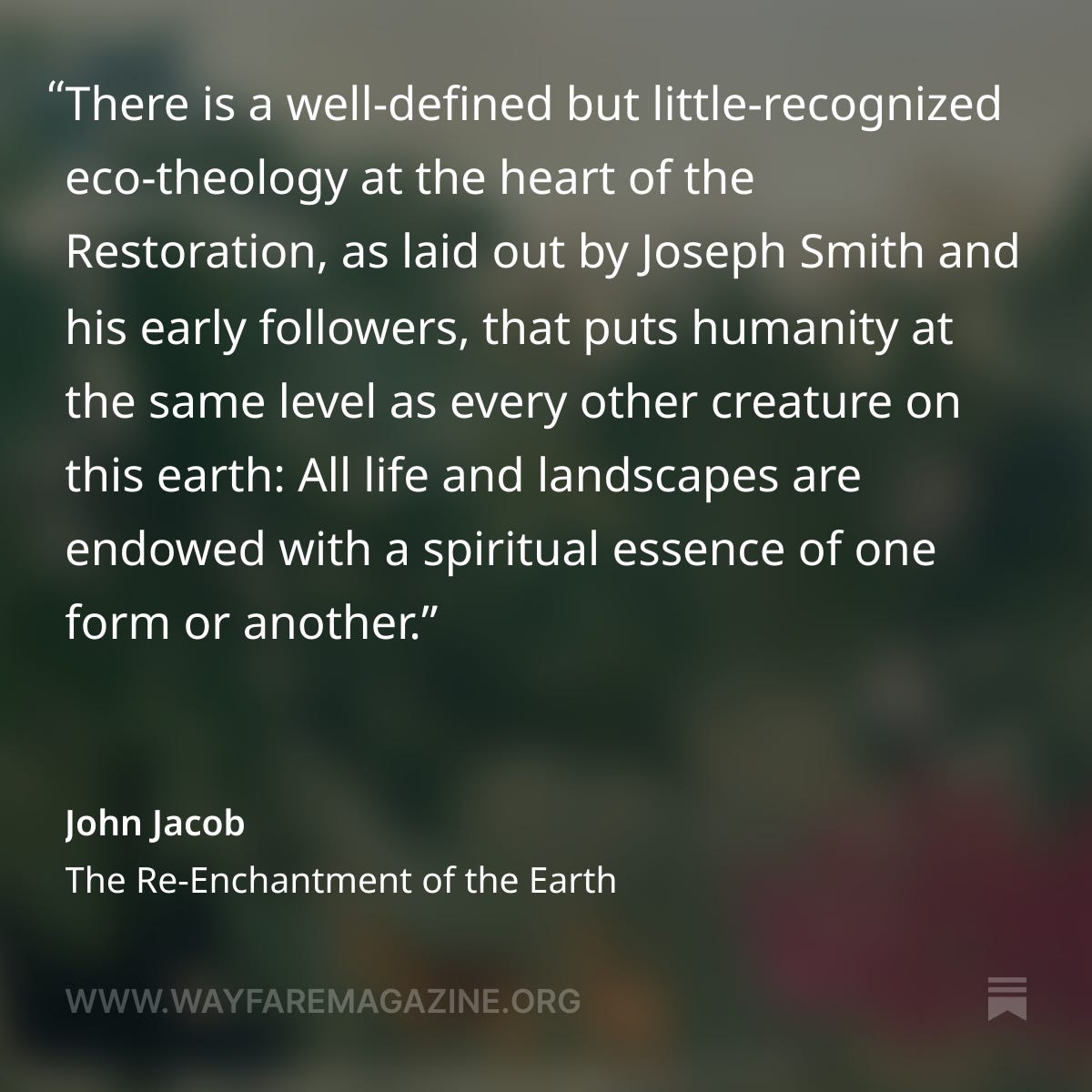How can I best serve God and others?
Faith Matters resources to accompany your Come Follow Me study: July 14-20

God gives knowledge to people who seek it.
Adam Miller & Rosalynde Welch: How to Have a Conversation with God
In this conversation, Adam and Rosalynde invite us to consider how we engage with scripture and revelation in our own lives. We explore what it means to truly see God’s face and hear God's voice and discuss how so often, revelation comes by paying attention to what is closest to us—the relationships and experiences that challenge us, stretch us, and ultimately transform us.
Adam and Rosalynde suggest that rather than treating scripture as something fixed and unchanging, we can approach it as an active, unfolding conversation. As Rosalynde put it, “The meaning of scripture is not fixed inside the covers of the book, but it unfolds in the space between the reader and the text.”
We love their insights about passages of scripture that feel unsettling. Could our discomfort itself be a catalyst for revelation? And could the very questions we feel most compelled to ask be what expands our capacity to recognize Christ as He truly is—and to see the world more as He sees it?
This was such a rich and expansive conversation, and we hope it gives you a new lens for engaging with scripture and revelation.
I can share what I have with others.
The courtyard offers itself as a canvas for connection and exchange. Residents donate toys to the courtyard and kids play with them freely. We learn that all this abundance belongs to everyone. I’ve stopped buying any new toys, knowing our children have dozens of toys just outside our back door, thousands if you count the blades of grass and sticks and gopher holes they also play with. My kids learn that the world is theirs, and that it is also everybody else’s. They take home a toy from the courtyard, and then we bring it back. For his birthday, my son asked for new batteries to replace the ones in the broken toys outside, and then we spent the day unscrewing the neighborhood toys and replacing their batteries.
—Lindsey Meservey
It would be understandable to group the Latter-day Saint movement as one of many utopian experiments along the frontiers of the United States during the nineteenth century. Experiments that included Shakers, Transcendentalists, Perfectionists, and Separatists in various communities throughout the Northeast and Midwest—all were radical attempts to improve and protect social fabric that began to fray as a consequence of the early industrial revolution, population growth, and increased mobility. In almost every instance, structures of family, the nature of work, and the parameters governing human intimacy were part of the experimentation.
The Zion-building enterprise among early Latter-day Saints thus required specific temporal instructions about how to “appoint unto this people their portions, every man equal according to his family, according to his circumstances and his wants and needs.” “And all this for the benefit of the church of the living God, that every man may improve upon his talent, that every man may gain other talents, yea, even an hundred fold, to be cast into the Lord’s storehouse, to become the common property of the whole church—Every man seeking the interest of his neighbor, and doing all things with an eye single to the glory of God.” Gospel-living was an all-encompassing paradigm.
Scholars have noted that in nineteenth-century Latter-day Saint experience, theological, economic, political, familial, and liturgical concepts had heavy overlap. Indeed Joseph Smith revealed a Lord for whom “all things [are] both spiritual and temporal,” and early communities of saints often had their civic, ecclesiastical, militia, and economic authorities all combined into a single leadership role. … This was a society which cared about shared work and shared outcomes along with robust, scalable conceptual structures to gather and build humankind.
… The Mormon idea of community proved strangely resilient, even when the cultural ethos began later to emphasize individuality and personal grit. Latter-day Saints of the twentieth and twenty-first centuries have always been inheritors of the tradition of communal belonging, even if at times it was deemphasized, ignored, or downplayed.
I can help “advance the cause” of Jesus Christ and His Church.
Learning to bring God’s music into our activities often requires practice. Our intention shifts. We say yes to God. We invite God into the process, even if the end result is unknowable or undefined. It’s characterized by hope and seeking. It has a wholly and holy different feel.
When loving, grace-filled partnerships arise, we rejoice in the truths we have discovered with the people we love. We do good from a place of communion with God. Life here feels like the call and response of a harmonious conversation between two violins. Here we’re serving or praying or playing or exploring math because those activities are intertwined with divine joy, peace, love, or power. They teem with truth, wisdom, or light. We are the bird flying, flapping our wings or soaring in the updrafts. The law is written on our innermost parts, engraved on our hearts (Jer. 31:33). We live the law in response to the crux of all the commandments: love God and love your neighbor (Matt. 22:36–40). As in Jesus’s parable of the vineyard workers, we stop worrying about who has labored longer, and instead rejoice for all who have learned to live in Christ—whether that realization came early or late in the day (Matt. 20:1–16). Works performed in response to grace are an expression of our intimate connection to God and all creation. We’re in partnership with God—in gracing.
…Embracing these moments leads me to God in the here and now. In all the works I do, from math, to raising children, to taking the sacrament, to belting Queen, I can live more fully in relationship with Christ. I can stop living a severed life. I can learn that life in Christ has been the natural state of affairs all along.
We have a divine and willing partner.
And an invitation to join the dance.
—Hannah Packard Crowther, Gracing
The Lord will lead me along. Jesus Christ will lead me along.
A life in Christ is an intimate partnership—so close that it feels like Christ is alive in our hearts. In this kind of life, our works come alive as a response to both life’s giftedness and its need. We anticipate the givenness of God from moment to moment. This life calls us to internal dimensions of sacredness and outward dimensions of love.
A life lived this way is a dance. One partner’s hand presses lightly upon his partner’s back, and she pivots to the left. His hip leads, hers follows. Her eyes glance right, he follows. Each subtle movement is complemented by reciprocity, animated by the shared rhythm. One partner pulls back, while the other reaches forward, both breathing in tandem. A concentrated attention on every movement is complemented by a countermovement, creating a fluidity in which her movements flow into his. When the partners in this divine dance are us and God, we learn to respond to what God offers and give something in return. This reciprocity creates a kind of uninterrupted unity.
The partnership of this dance feels to me like salvation.
—Hannah Packard Crowther, Gracing
I can receive all things with thankfulness.
The call to serve God matters more than where I serve.
In The Church of Jesus Christ of Latter-day Saints, at least, I wonder if we sometimes limit our application of the body of Christ idea to our callings within the Church. I hear it said that bishops are no more important than librarians or Primary teachers. Which is true, but maybe we should think more expansively, in terms of our individual vocations—those pursuits and ways of being to which we feel called, based on our unique life experiences, opportunities, and interests. Specializing our lives in this way seems to me a manifestation of gracing.
Casey, a no-nonsense mentor, gives tough love to struggling youth in both informal and formal ways. Sarah, who suffers from lupus and diabetes, makes it a priority to reserve her strength to be present and undistracted when her young children return home from school. Jessie serves—always doing the quiet, behind-the-scenes neighborhood work of moving the Happy Birthday sign from yard to yard during her morning walks. Mark travels the world with his family, eating with Moroccans and exploring tropical rainforests. Amanda, a professor, is intelligent and thoughtful—with her, conversations are always engaging.
And even within the realm of Church callings, our offerings are unique. Lauren was initially overwhelmed at being called as Relief Society president, panicking as she envisioned herself carting a wheelbarrow full of cleaning supplies and lasagnas through the neighborhood. Later she found grace in recognizing that her brand of love looked different but was no less valuable. The way she sat on my couch, listening with her whole body, was a beautiful form of love. No doubt she showed up for others in this way too.
The body of Christ has comedians and dancers, activists and healers, politicians and painters, musicians and athletes, those who cherish the good and those who root out the bad. There are thinkers and doers, speakers and listeners, teachers and learners, people who have found grace and those who are still seeking it. In my ideal conglomerate self, I would be all these things. But my life is embodied, not ideal—lived out with a particular personality, body, and mind. In choosing one life, one way of being in the world, I don’t need to assume my work matters less than others. I also don’t need to judge my friends for not choosing the life I have.
In the body of Christ, Casey is a foot, Mark an eye, Sarah a shoulder, Lauren a neck. My friends are elbows, ears, hearts, wombs, and backs. Part of choosing a certain devoted life involves un-choosing other devoted lives. It means appreciating and supporting other vocations and ways of being that look vastly different from our own.
—Hannah Packard Crowther, Gracing















